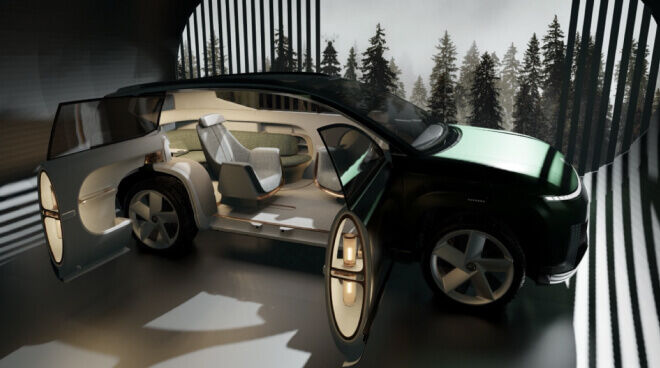Hyundai Motor Company, a South Korean automotive giant, has rapidly evolved from its humble beginnings to become a global leader in the automotive industry. Central to its success has been its approach to design, which goes beyond aesthetics to integrate functionality, innovation, and cultural appeal. Understanding the philosophy that drives Hyundai’s car designs offers valuable insights into how the company has shaped its identity and market positioning over the years.
The Evolution of Hyundai’s Design Language
Hyundai’s design journey can be traced through distinct phases, each reflecting the company’s response to market trends, technological advancements, and evolving consumer preferences:
- Early Years: In its formative years, Hyundai focused on affordability and reliability rather than distinctive design. Cars were often perceived as functional but lacked a strong design identity.
- Transition Period: During the late 1990s and early 2000s, Hyundai began to invest heavily in design research and development. This period marked a shift towards more refined aesthetics and cohesive design language.
- Modern Era: From the mid-2000s onwards, Hyundai adopted a more ambitious approach to design, embracing fluidic sculpture and later, sensuous sportiness as key design philosophies.
Key Elements of Hyundai’s Design Philosophy
Hyundai’s design philosophy is characterized by several key elements that define its approach to creating vehicles:
- Sensuous Sportiness: Introduced in 2019, the sensuous sportiness design philosophy aims to evoke emotional responses through sensual forms and dynamic proportions. This approach emphasizes a sense of dynamism and elegance, evident in models like the Sonata and Elantra.
- Fluidic Sculpture: Prior to sensuous sportiness, fluidic sculpture was Hyundai’s design language from 2010 to 2019. It emphasized flowing lines and a dynamic aesthetic inspired by natural elements like water and wind.
- Global Design Philosophy: Hyundai’s design teams across the world collaborate to ensure that their cars appeal to diverse international markets while maintaining a coherent brand identity. This global approach helps Hyundai cater to local tastes without sacrificing its overall design integrity.
Also Read : From Concept to Reality: Hyundai Car Design Journey
The Role of Technology and Innovation
Technology and innovation play a crucial role in Hyundai’s design philosophy:
- Advanced Materials: Hyundai has been at the forefront of using advanced materials such as high-strength steel and lightweight alloys to improve performance, safety, and fuel efficiency without compromising design flexibility.
- Design Tools: Computer-aided design (CAD) and virtual reality (VR) simulations enable Hyundai’s designers to visualize and refine every aspect of a vehicle’s design before production begins. This iterative process helps in achieving the desired aesthetic and functional goals.
- Environmental Considerations: Hyundai integrates sustainability into its design philosophy by exploring eco-friendly materials and manufacturing processes. This commitment to environmental responsibility is reflected in models like the Hyundai Ioniq, which offers hybrid and electric variants.
Case Studies: Iconic Hyundai Models
Examining specific models provides a deeper understanding of how Hyundai’s design philosophy translates into real-world vehicles:
- Hyundai Sonata: The Sonata exemplifies Hyundai’s sensuous sportiness design philosophy with its striking exterior lines and upscale interior. The cascading grille and sleek profile contribute to its dynamic presence on the road.
- Hyundai Tucson: As a compact SUV, the Tucson showcases Hyundai’s ability to blend functionality with distinctive design elements. Its bold front fascia and sculpted sides appeal to both urban drivers and outdoor enthusiasts.
- Hyundai Kona Electric: The Kona Electric demonstrates Hyundai’s commitment to sustainable mobility with a design that balances aerodynamics and aesthetics. Its distinctive front lighting and streamlined silhouette enhance efficiency without sacrificing style.
Future Directions in Hyundai Design
Looking ahead, Hyundai continues to innovate and adapt its design philosophy to meet future challenges and opportunities:
- Electric and Autonomous Vehicles: With the rise of electric and autonomous vehicles, Hyundai is exploring new design possibilities that prioritize aerodynamics, interior comfort, and human-machine interaction.
- Connected Mobility: Integrating smart technologies and connectivity features into vehicle design is crucial for Hyundai’s future designs. This includes seamless integration of infotainment systems, driver-assistance technologies, and vehicle-to-everything (V2X) communication.
- Designing for Urban Environments: As urbanization continues, Hyundai is focusing on designing compact, efficient vehicles that are suited to dense city environments while maintaining comfort and versatility.
Conclusion
In conclusion, Hyundai’s design philosophy is a dynamic blend of artistry, functionality, and technological innovation. From its early years of pragmatic designs to its current embrace of sensuous sportiness, Hyundai has continuously evolved to meet the demands of a global market. By understanding and appreciating Hyundai’s design philosophy, one gains deeper insights into how the company shapes its identity and connects with consumers worldwide.
By staying true to its core values of innovation, sustainability, and customer-centricity, Hyundai continues to push the boundaries of automotive design, setting new standards for the industry.
This article provides a comprehensive overview of Hyundai’s design philosophy, incorporating historical context, key elements, case studies, and future directions to offer readers a thorough understanding of what drives Hyundai’s approach to car design.
(source)
Originally posted 2024-07-16 07:10:56.
